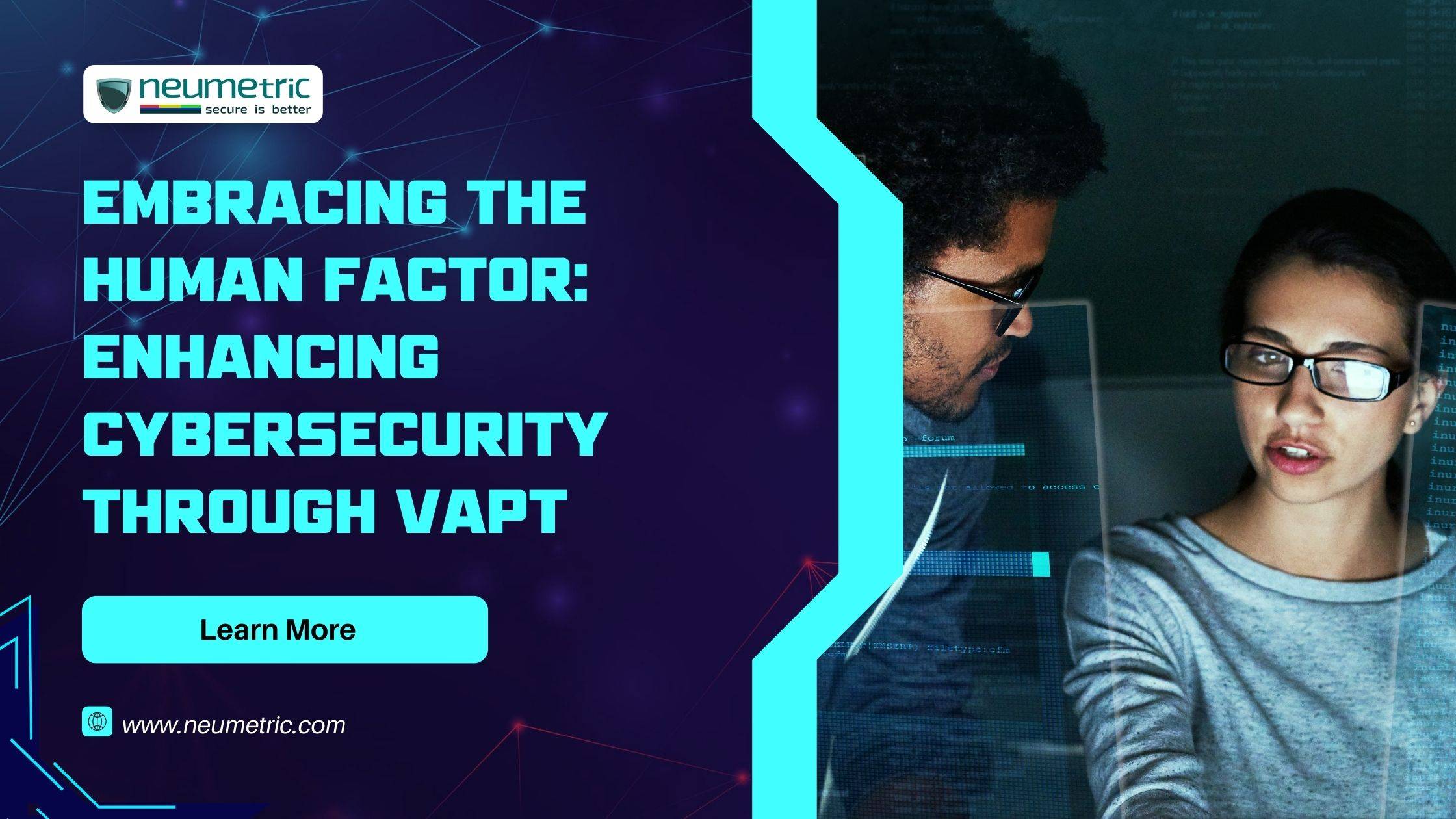Table of Contents
ToggleIntroduction
In today’s digital landscape, Vulnerability Assessment and Penetration Testing (VAPT) serve as crucial pillars of cybersecurity. VAPT involves the systematic examination of systems, networks, and applications to identify vulnerabilities and simulate potential cyber attacks. It’s not just about finding weaknesses but understanding their potential impact on security.
The cybersecurity realm is in constant flux, with threats evolving at an unprecedented pace. Attackers are becoming more sophisticated, exploiting both technological vulnerabilities and human weaknesses. The growing interconnectivity of systems and devices amplifies the risk, making VAPT an essential proactive measure.
While technological advancements are pivotal, the human element in cybersecurity cannot be overlooked. People are both the weakest link and the strongest defence in this dynamic ecosystem. Understanding and addressing human factors within VAPT is essential for comprehensive security.
Understanding Human Factors in Cybersecurity
Cybersecurity is not solely about technological fortification; rather, it’s an intricate blend of technology and human behaviour. Understanding the human aspects, such as common vulnerabilities, psychology behind cyber attacks, and insider threats, is crucial in fortifying defence strategies against potential breaches.
- Human Errors: Common Vulnerabilities
Human errors persist as one of the most exploited gateways for cyber attackers. Seemingly innocuous mistakes, such as falling prey to phishing emails, using weak passwords, or mishandling sensitive data, have led to substantial security breaches. Real-world examples vividly illustrate how these minor lapses can result in significant consequences, emphasising the need for heightened awareness and education.
- Psychology of Cybersecurity
Exploring the behavioural facets of security threats uncovers the underlying psychology driving cyber attacks. Cognitive biases, social engineering tactics, and the intricacies of human decision-making significantly impact the efficacy of security measures. A comprehensive understanding of these psychological aspects is vital for crafting robust defence strategies that anticipate and counteract human vulnerabilities.
- Insider Threats
While external threats often take the spotlight, insider threats pose a significant risk to cybersecurity. Whether intentional or accidental, various forms of insider threats can compromise sensitive data and systems. To combat these risks, implementing stringent mitigation strategies, such as access controls and continuous monitoring, becomes imperative in protecting against internal threats.
Integrating Human-Centric Approaches in VAPT
Addressing cybersecurity challenges necessitates a human-centric approach in Vulnerability Assessment and Penetration Testing (VAPT). Integrating human-centric methodologies can significantly enhance an organisation’s defence against cyber threats.
- Training and Awareness Programs
Establishing a security-conscious culture begins with robust training programs. These initiatives should include engaging and practical security training sessions. Moreover, continuous education and awareness campaigns empower individuals to recognize and mitigate potential threats, effectively serving as the first line of defence against cyber attacks.
- Human-Centred Design in Security
One prevalent challenge in security measures is the conflict between usability and stringent security protocols. Striking a balance between these elements is crucial. Designing systems that are both user-friendly and secure encourages compliance and reduces vulnerabilities by fostering a security-conscious environment without compromising usability.
- Behavioral Analytics and User-Centric Monitoring
Leveraging behavioural analytics aids in identifying anomalies and patterns indicative of potential threats. However, while implementing user-centric monitoring, ethical considerations and privacy concerns must take precedence. Respecting individuals’ rights and ensuring compliance with ethical standards are paramount in these monitoring practices.
Overcoming Challenges in Implementing Human-Centric VAPT
- Resistance to Change and Compliance Issues
Cultural and organisational barriers often impede the adoption of new security measures. Strategies aimed at fostering a cultural shift towards cybersecurity consciousness and compliance are crucial for successful implementation.
- Resource Allocation and Investment
Conducting a cost-benefit analysis of human-centric approaches helps organisations justify investments. Demonstrating the long-term return on investment and the tangible impact on security fosters support for these initiatives within an organisation.
- Regulatory and Legal Implications
Navigating compliance requirements and legal frameworks is critical in VAPT. Ensuring that security measures align with legal mandates without compromising effectiveness is essential for a robust security posture.
Conclusion
The implementation of human-centric VAPT methodologies encounters various challenges, including resistance to change, resource allocation, and compliance issues. Strategies aimed at fostering a cultural shift towards cybersecurity consciousness and compliance are imperative for successful implementation. Performing cost-benefit analyses of human-centric approaches and ensuring alignment with regulatory frameworks further strengthen an organisation’s security posture.
In conclusion, a holistic cybersecurity approach acknowledges the indispensable role of both technology and human behaviour. Integrating human-centric approaches within VAPT is paramount to fortify defences against evolving cyber threats. Embracing these methodologies not only bolsters technical safeguards but also nurtures a security-conscious culture essential for safeguarding against potential breaches in our increasingly interconnected digital world.
FAQs:
Why is it essential to focus on human behaviour in cybersecurity when we have advanced technological solutions available?
While technology indeed plays a crucial role in fortifying our digital defences, human behaviour remains a critical factor that can’t be overlooked. Cyber attackers often exploit human vulnerabilities through tactics like phishing emails, leveraging cognitive biases, or exploiting lapses like weak passwords. Understanding these human aspects in cybersecurity is crucial as they can serve as gateways for cyber threats, highlighting the need for a holistic approach that incorporates both technology and human-centric strategies.
How do insider threats pose a significant risk to cybersecurity, and what measures can be taken to combat them?
Insider threats, whether intentional or accidental, pose a substantial risk to the security of sensitive data and systems. These threats can stem from employees, contractors, or individuals with authorised access. Implementing stringent measures such as access controls, continuous monitoring, and user behaviour analysis becomes imperative to counter these internal risks. It’s vital to create a culture of trust and awareness within organisations while simultaneously implementing robust security measures to mitigate insider threats effectively.
How can organisations strike a balance between user-friendly security measures and stringent protocols to ensure both security and usability?
Designing security measures that are user-friendly without compromising on robustness is indeed a challenge. Striking this balance involves a careful approach that prioritises usability while integrating strong security protocols. It requires designing systems that are intuitive and efficient, encouraging compliance while reducing vulnerabilities. Organisations need to invest in continuous education and user training to instil a security-conscious culture without sacrificing usability, ensuring a harmonious blend of both aspects for comprehensive cybersecurity.





